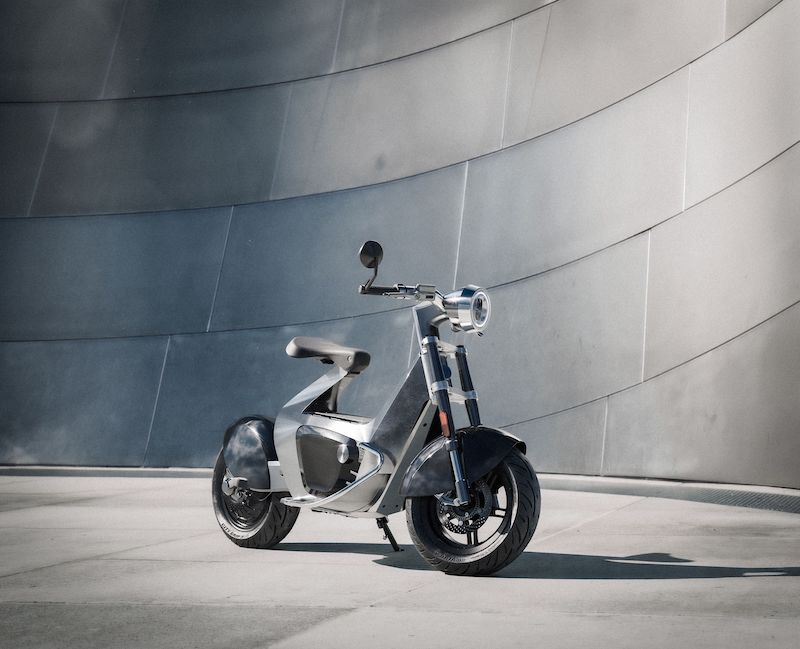
Stilfold patents its ‘industrial origami’ manufacturing technology
Swedish design and technology company Stilfold – the parent company of electromobility startup Stilride – has been granted its first patent right for its innovative “industrial origami” manufacturing technology.
Stilfold’s technology enables designers to produce complex, light and sustainable structures by folding flat sheet metal over curves using computational design and advanced robotics.
The Swedish patent covers the core technology that enables Stilfold to design and build sophisticated products using origami-inspired curve folding.
It includes the company’s proprietary computer-guided software (called Stilware) which enables designers to create folding instructions for flat materials and turn them into three-dimensional shapes.
The idea behind Stilfold is to design and manufacture products that combine functionality, durability and sustainability, enabling designers to use fewer raw materials and components without sacrificing design complexity.
Eventually, the Stilfold technology will be made available to designers, architects, manufacturers and engineers who want to licence it to build their own products whilst minimising their environmental impact.
To date, Stilride has eleven pending patent applications in Sweden, the United States, Europe and internationally (PCT) covering different aspects of its technology.
How Stilfold works
Stilfold’s Stilware software gathers information about the desired shape the designer wants to create and the properties of the material being used.
The designer, engineer or architect uses the software to simulate folding and unfolding their desired shape, so they can create “folding instructions” to bring it to life.
The flat sheets are laser cut to the necessary shapes and sizes.
The folding instructions are sent to an industrial robot. Each part is fed one-by-one through the robotic cell to create each element of the design. Robotic arms and tooling with specially-designed fittings fold each piece to create the desired structure.
If required, each folded structure (whether it’s a beam, enclosure, surface structure or exoskeleton) is glued, welded or fitted with additional components to create the finished product.
The potential applications for Stilfold are diverse and include aerospace, transportation and architecture. Stilfold’s daughter company, Stilride, is already using the technology to build a hotly anticipated light electric motorcycle: the Stilride 1.
The technology is also being used by Polestar to develop the world’s first climate neutral car; and by Swedish space innovation agency I.S.A.A.C. to explore how curve folding could be used for construction in outer space.
Stilfold has also released several case studies showcasing how the technology could be used to improve material efficiency and reduce weight, cost, components and CO2 emissions for structures including bridges and semi-trailers for trucks.
Jonas Nyvang, CEO and co-founder at Stilride, says: “We’re thrilled to have secured a patent for Stilfold. The patent means we can start sharing our industrial origami technology with the world and realise our vision of empowering forward-thinking companies, designers and engineers to reimagine how they make things.
“The patent is a recognition of our originality and creativity in developing a new way of manufacturing with metal: one of the most widely used and recyclable materials in the world.
“AT Stilfold, we’ve developed knowhow and IP for several years and continue to do so. We are currently in possession of a growing international IP portfolio.
“In addition to this approved patent, we have eleven pending patent applications spread across four different patent families. Our IP portfolio covers Stilfold – our ‘industrial origami’ manufacturing process – as well as our proprietary tools for forming sheet material, material diagnostics and specific design applications.”


